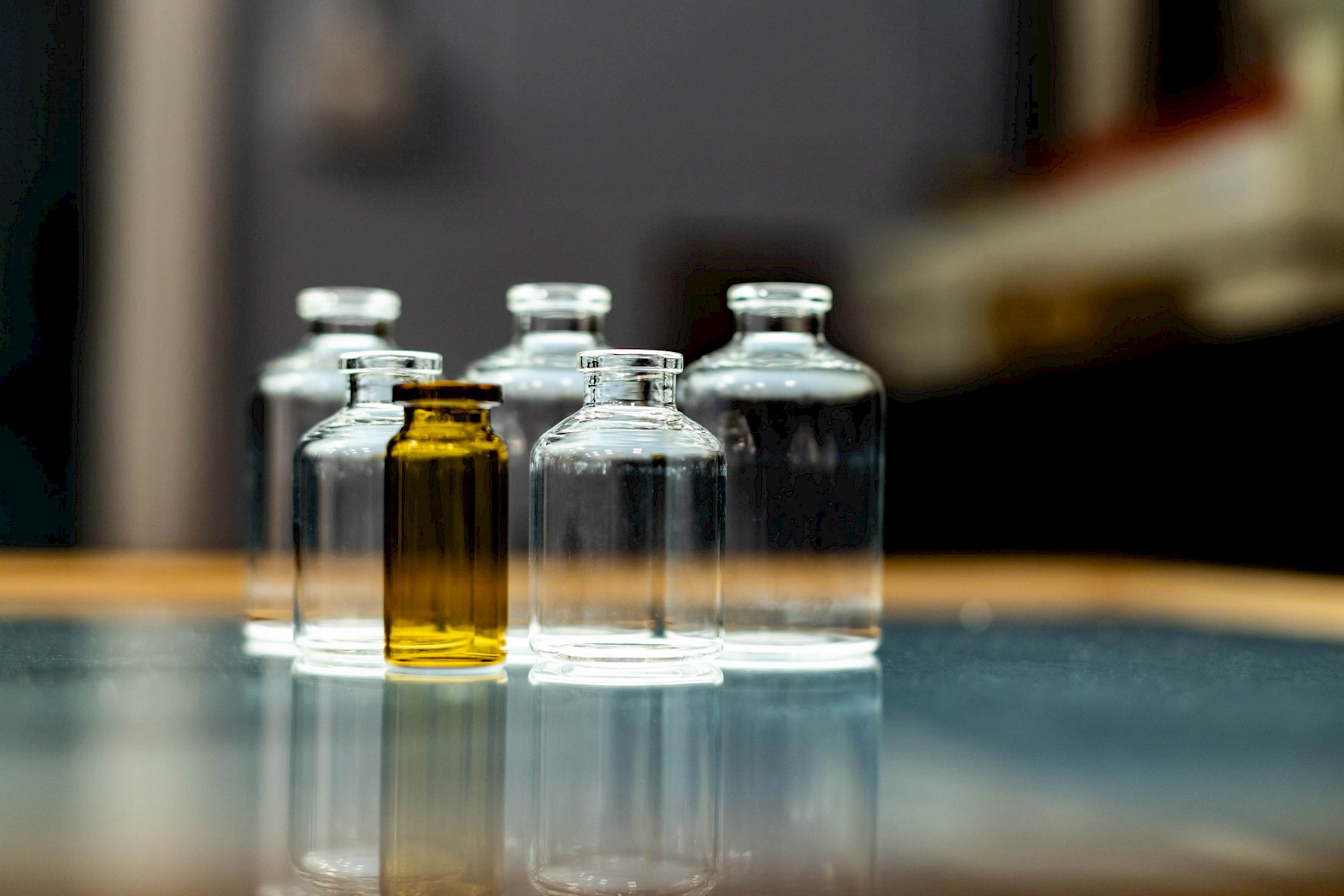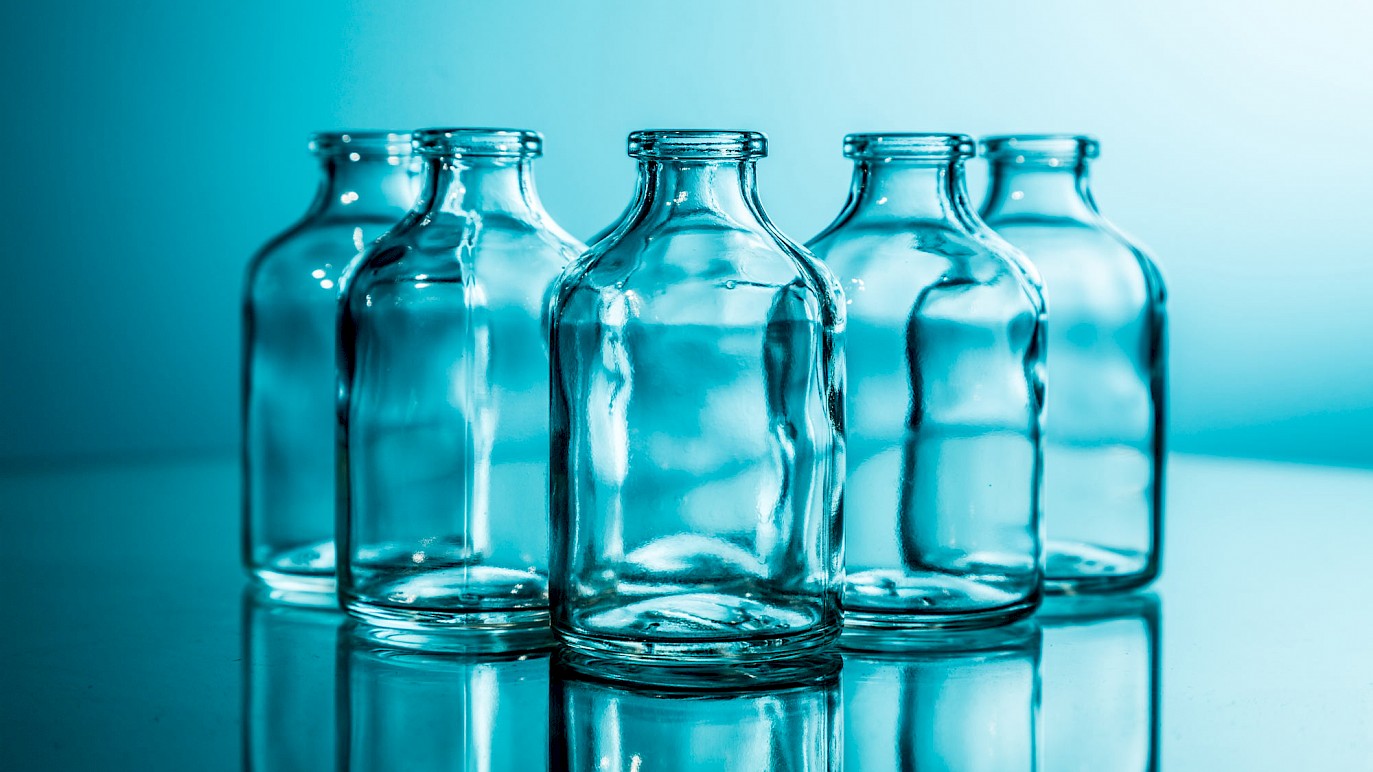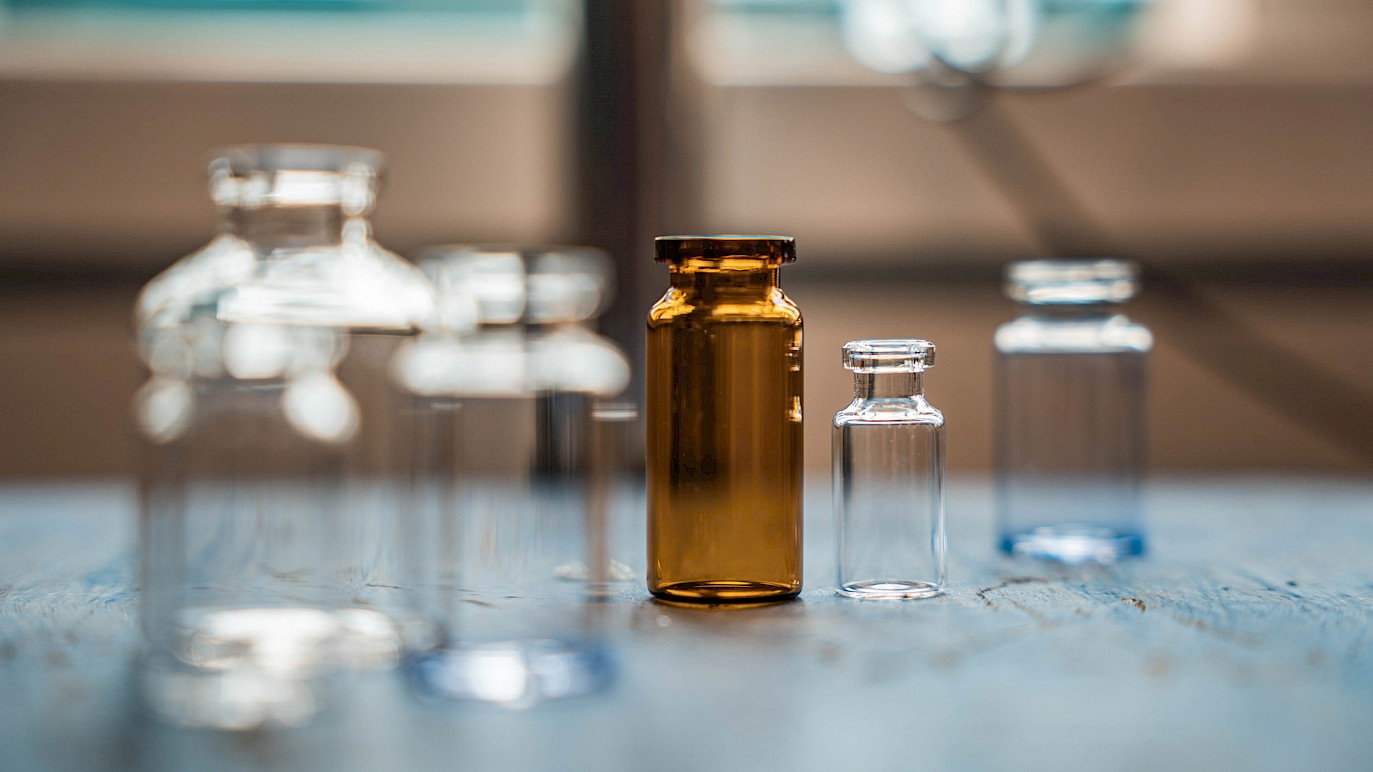We regularly batch test pharmaceutical glassware for a range of global manufacturers, importers and suppliers to verify compliance to industry standards, dimensional specifications and performance properties.
Our services include verification of type I, II, and III glass containers for pharmaceutical use as primary packaging (containers, bottles, vials and glass ampoules testing) and parenteral delivery vessels (cartridges and syringes testing) against worldwide pharmacopoeia monographs and international standards. This includes hydrolytic resistance against the European Pharmacopoeia/Pharmacopée Européenne (EP chapter 3.2.1) and United States Pharmacopoeia (USP <660>).
Pharmaceutical testing
This suite of testing verifies that a glass packaging container provides adequate protection to its contents from the environment, minimises loss of constituents, and that the container itself does not interact physically or chemically with the contents such that their quality or function is degraded. Analysis and verification are provided against the United States Pharmacopoeia (USP), European Pharmacopoeia (EP) and international (ISO) standards.
Tests available
Hydrolytic resistance: sometimes referred to as alkalinity test, including:
- Hydrolytic resistance of the inner surfaces of glass containers: Surface glass test (USP <660>) and surface test (Test A - EP Chapter 3.2.1); also referred to as the whole article test
- Hydrolytic resistance of glass grains: powdered glass test (USP <660>) and glass grains test (Test B - EP Chapter 3.2.1)
- Arsenic Release; applies to containers for aqueous parenteral preparations: USP <211> Arsenic and EP Chapter 2.4.2 Arsenic
- Spectral transmission for coloured glass containers - light transmission and UV resistance (applies to coloured containers): EP 3.2.1 and USP <660)
- Testing USP <1660>, Delamination and ICHQ3D Studies
- Surface etching test (Test C - EP Chapter 3.2.1) and USP <660> – to determine whether the containers have been surface-treated
- Delamination assessments in accordance with guidance in <1660>
- Extractables testing in accordance with ICH Q3D
- ISO 4802 (Glassware – Hydrolytic resistance of the interior surfaces of glass containers)
- ISO 719 (Glass - Hydrolytic resistance of glass grains at 98 degrees C
- ISO 720 (Glass - Hydrolytic resistance of glass grains at 121 degrees C)
Additional support, including chemical composition quality assessment physical testing, failure analysis, delamination investigation, foreign body analysis and consultancy services, are also available.
Pharmaceutical glass types
There are three types of glass containers for pharmaceutical use. A glass is designated a particular type only where it complies with the requirements of the specified pharmacopoeia. We verify glass products against a range of international pharmacopoeias, including the United States Pharmacopoeia (USP <660>), European Pharmacopoeia (Ph. Eur. Ed Chapter 3.2.1) and British Pharmacopoeia (BP).
The three types of pharmaceutical glass are:
- Type I – a 'neutral' glass with very high level of hydrolytic resistance. Type I containers are considered suitable for most preparations – whether or not for parenteral administration.
- Type II – high level of hydrolytic resistance, but this can be achieved through surface coating of a soda-lime-silica glass. These are generally suitable for most acidic and neutral preparations or for aqueous preparations including parenteral administration.
- Type III – moderate hydrolytic resistance, usually uncoated soda-lime-silica glass. These are generally suitable for non-aqueous preparations for parenteral administration, powders intended for parenteral administration (excluding freeze-dried preparations), and preparations for non-parenteral administration.
Delamination and propensity prescreening
Please see our delamination investigative services for further information regarding delamination analysis and propensity prescreening which can be carried out in accordance with USP <1660>.
In addition to delamination screening and propensity studies our analytical laboratory now provides full migration studies against the ICH Q3D guideline for elemental impurities.
Failure analysis
Please see our glass fracture and failure analysis service if you are experiencing unexpected failure of your glass. This service can be further supported with quality assessment and technical consultancy where required.
Standards and methods
We provide testing to a range of international standards and pharmacopoeias, including:
- USP – Chapter <660> and <1660> – The United States Pharmacopoeia (USP)
- Ph. Eur Ed – Chapter 3.2.1 - European Pharmacopoeia/Pharmacopée Européenne (EP)
- BP-Vol IV – The British Pharmacopoeia (BP)
- GOST 13905 – Russian Water Resistance Test
- JP16 – Japanese Pharmacopoeia 18th Edition (JP)
- ISO 4802, Glassware – Hydrolytic resistance of the interior surfaces of glass containers
- ISO 719, Glass – Hydrolytic resistance of glass grains at 98 degrees C
- ISO 720, Glass – Hydrolytic resistance of glass grains at 121 degrees C
Pharmaceutical testing and verification leadership and expertise
We are leading experts in pharmaceutical glass verification and routinely work with global businesses across the whole glass supply chain. We provide pharmacopoeia testing as well as a range of analytical, quality assessment, mechanical testing, bespoke services, and training.




